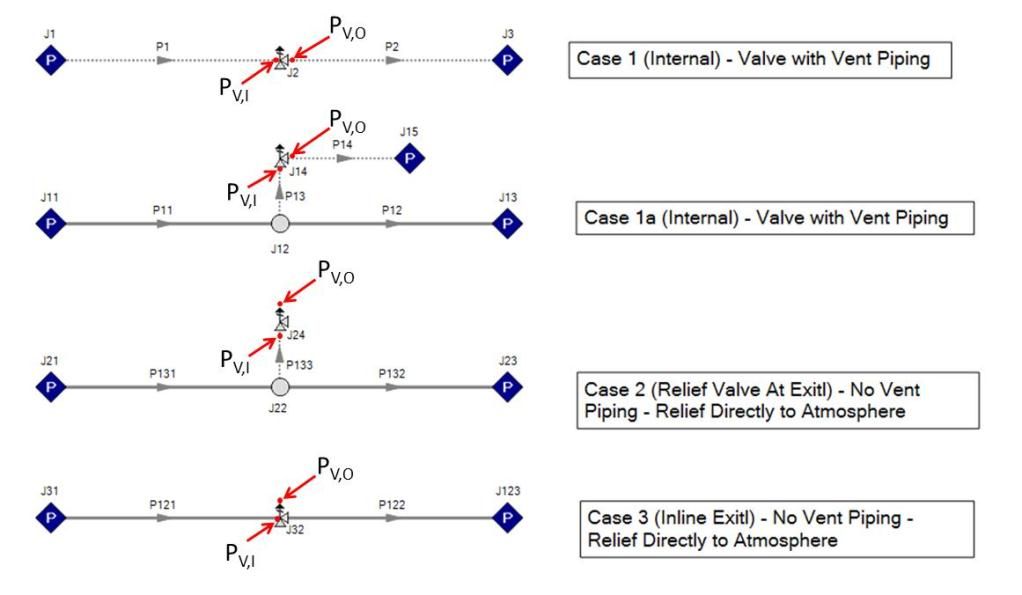AFT Blog
Curious About Modeling Relief Valves?
Relief valves can be modeled in four different configurations with AFT products and they are shown in the figure below. The required inputs for modeling a relief valve are the valve type, cracking pressure, valve loss model, and the exit pressure in the case of relieving to the atmosphere.
There are three types of relief models available: Internal (Cases 1 & 1a), Relief Valve at Exit (Case 2), and Inline Exit (Case 3). In cases 1 and 1a, the relief valve is relieving into vent piping downstream of the valve. Note that there is initially no flow in the pipe downstream of the valve until the relief valve cracks open (the pipes are assumed to be 100 % full of fluid and not empty). Cases 2 and 3 both relieve directly to ambient conditions (ie, the atmosphere) and hence, an exit pressure (ie, the ambient pressure) is required as an input.
The “cracking pressure” is a required specification for each valve type. In order for the relief valve to crack open, the following inequality must be satisfied.
Where:
dP = Cracking Pressure
PV,I = Relief Valve Inlet Pressure
PV,O = Relief Valve Outlet Pressure
-Cases 1 & 1a: Inlet Pressure of the Pipe Downstream of the Relief Valve
-Cases 2 & 3: Exit Pressure at Ambient Conditions





Comments 5
pl.explain the following
1.how to decide the pressure at the outlet of the relief valve? in all the 4 cases?
2.how to find the reaction forces on the valve inlet for case 1,1a,2,3?
thanks
Depending on the particular case, you will define the cracking pressure difference as described in the four cases. The software will then calculate the pressures throughout the system including at the inlet and outlet of the relief valves.
AFT Fathom and AFT Arrow are steady-state modeling tools and external calculations would be required to determine any reaction forces based on the pressures and flow rates at the valve.
AFT Impulse can calculate the transient unbalanced forces associated with relief valves opening and closing.
I have enjoyed reading this wonderful article about Modeling Relief Valves issues. Entire discussion is more helpful and all the tips are more effective too. Please share some more tips with us.
Relief Valve Discharge
What a great and helpful set of tips to think about and start implementing today! I’m so happy to have found your blog! So nice to seek out anyone with some authentic ideas on this subject. Thanks for sharing, please share more data related to this content.
Safeguard a Pressure Vessel
Great post! You have explained modeling of relief values very nicely. I have learned a lot from this post and I am sure other people who are reading will surely learn a lot from this regarding this topic you have mentioned. This is quite great help what you are doing.
Relief Valve Discharge